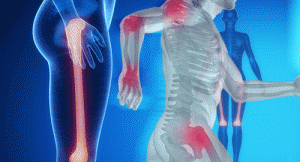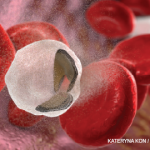 Although rheumatology has seen impressive generational leaps over the past 20 years in helping patients with rheumatic diseases deal with inflammation, the same cannot be said for the pain caused by inflammation, one leading expert says.
Although rheumatology has seen impressive generational leaps over the past 20 years in helping patients with rheumatic diseases deal with inflammation, the same cannot be said for the pain caused by inflammation, one leading expert says.
“There’s been great progress in the management of inflammation over the last couple of decades,” says Yvonne Lee, MD, assistant professor of medicine at Brigham and Women’s Hospital in Boston, whose research focuses on the inflammatory and non-inflammatory components of pain in rheumatic diseases. “I would say in my mind, sadly, the progress in treating pain has not been nearly as great in magnitude. Although the drugs for treating inflammation sometimes do quite well in treating pain, a substantial number of patients continue to have pain despite treatment with strong immunosuppressant medication. There is still a long way to go.”
And yet Dr. Lee feels recent advances in the development and refinement of neuro-imaging methods may soon help usher in new treatments.
“I am hopeful that in the next several years we will make some more advances more quickly,” she says.
Dr. Lee says pain management for rheumatic diseases needs to move forward on two parallel tracks. First, interventions and treatments for the physical effects of pain need to be improved. Second, researchers need to identify the mechanisms of pain so that better interventions can be contemplated and then thought through.
“Pain is the most common reason patients come to see a rheumatologist—at least for the first visit. So it should be at the forefront of [rheumatologists’] minds to understand the level and type of pain their patient is experiencing and to figure out the causes of that pain, because that has implications for how they’re going to treat that patient.”
The reason pain research has lagged behind some other aspects of rheumatic care is because the subject area is difficult to study.
“It is multi-factorial,” Dr. Lee says. “It is subjective. Therefore, we’ve been impaired in having the appropriate assessment tools to study it. …There’s huge inter-individual variability in pain and how people perceive pain. As a result, there has been increasing recognition that [we] need ways to objectively study [pain] instead of just asking, ‘On a scale of 0–10, how intense is your pain?’”
In recent years, researchers have begun trying to find more objective measures to assess pain and corresponding measures to determine the underlying mechanisms of pain.
“In our studies, we do a lot of what’s called quantitative sensory testing. We expose subjects to different types of pain—pressure, heat, cold—and different paradigms at different sites, [such as] joint sites or non-joint sites, to get a better assessment of what the underlying mechanisms are,” Dr. Lee says.


